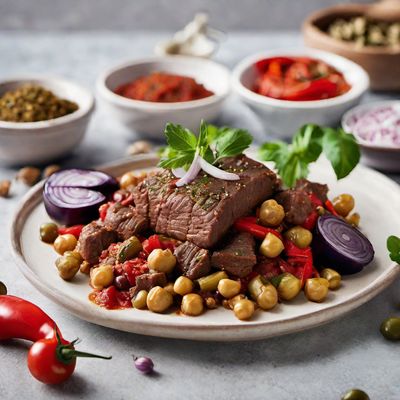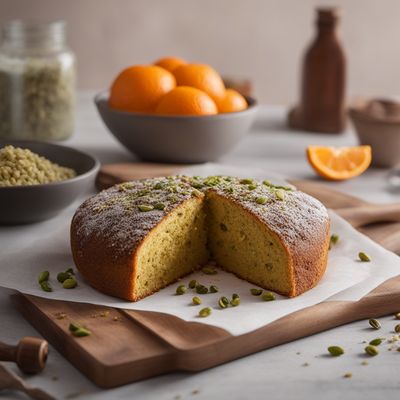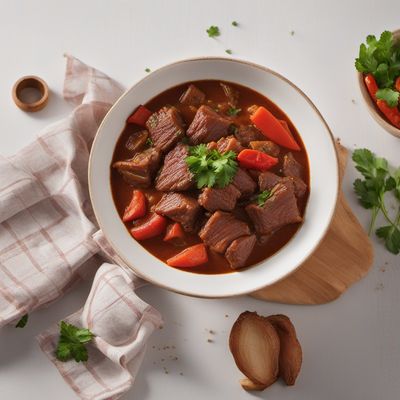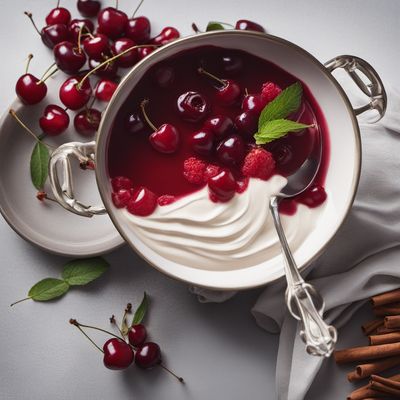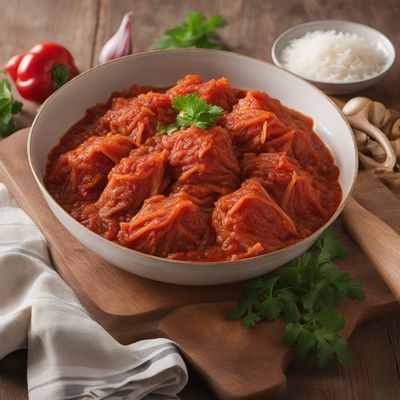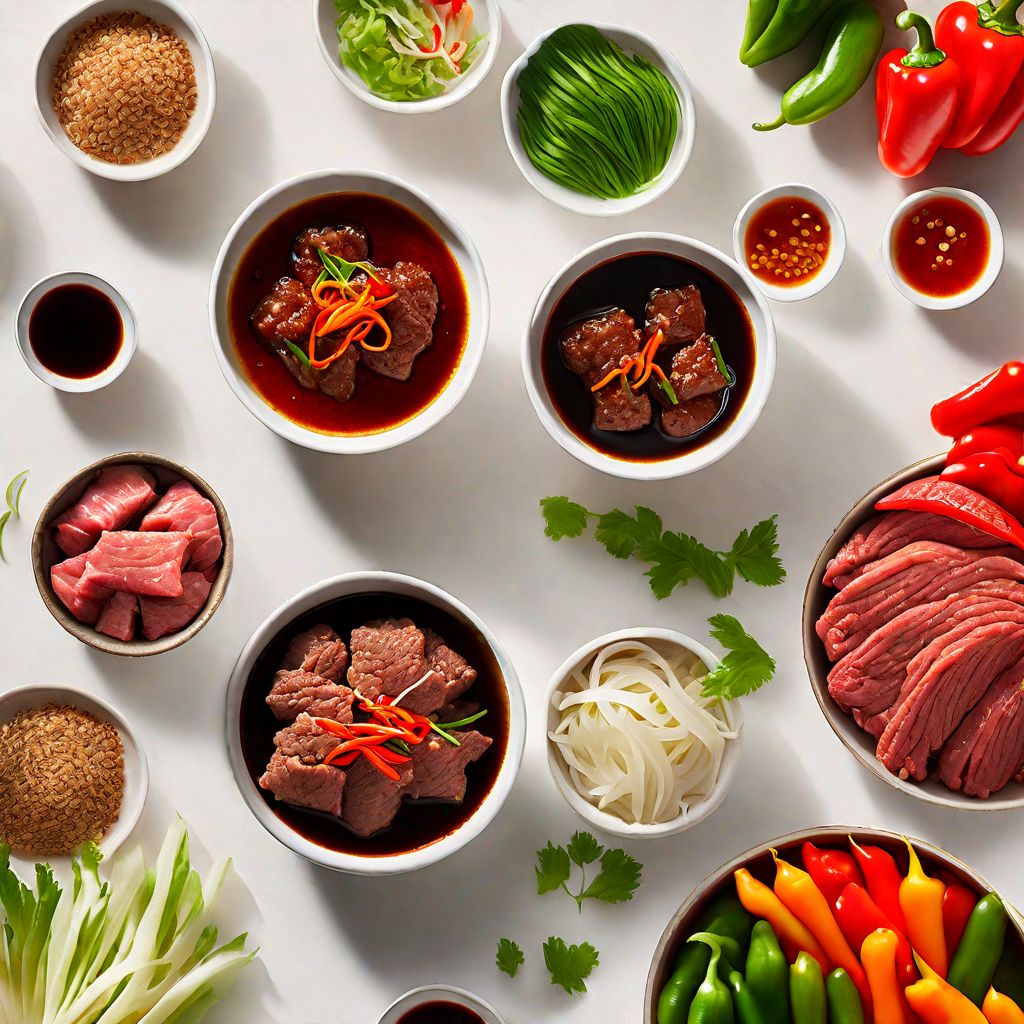
Recipe
Korean-style Gulyás
Bulgogi Gulyás: A Fusion of Korean and Hungarian Flavors
4.8 out of 5
In Korean cuisine, bold flavors and vibrant spices are key. This Korean-style Gulyás recipe combines the rich and hearty Hungarian stew with the fiery and savory flavors of Korean cuisine. The result is a fusion dish that will tantalize your taste buds and introduce you to a whole new world of flavors.
Metadata
Preparation time
40 minutes
Cooking time
1 hour
Total time
1 hour 40 minutes
Yields
4 servings
Preparation difficulty
Medium
Suitable for
Omnivore, Gluten-free, Dairy-free, Nut-free, Low-carb
Allergens
Soy
Not suitable for
Vegan, Vegetarian, Paleo, Keto, Halal
Ingredients
While the original Hungarian Gulyás is traditionally made with beef, paprika, and vegetables, this Korean adaptation incorporates Korean ingredients and flavors. The beef is marinated in a Korean-style bulgogi sauce, which adds a sweet and savory element to the dish. Additionally, Korean chili paste (gochujang) and soy sauce are used to enhance the spiciness and umami flavors. We alse have the original recipe for Gulyás, so you can check it out.
-
500g (1.1 lb) beef, thinly sliced 500g (1.1 lb) beef, thinly sliced
-
3 tablespoons soy sauce 3 tablespoons soy sauce
-
2 tablespoons Korean chili paste (gochujang) 2 tablespoons Korean chili paste (gochujang)
-
2 tablespoons brown sugar 2 tablespoons brown sugar
-
2 tablespoons sesame oil 2 tablespoons sesame oil
-
1 onion, sliced 1 onion, sliced
-
2 cloves garlic, minced 2 cloves garlic, minced
-
1 red bell pepper, sliced 1 red bell pepper, sliced
-
1 green bell pepper, sliced 1 green bell pepper, sliced
-
2 carrots, sliced 2 carrots, sliced
-
4 potatoes, peeled and cubed 4 potatoes, peeled and cubed
-
4 cups (950ml) beef broth 4 cups (950ml) beef broth
-
2 tablespoons vegetable oil 2 tablespoons vegetable oil
-
Salt and pepper to taste Salt and pepper to taste
-
Fresh cilantro, for garnish Fresh cilantro, for garnish
Nutrition
- Calories (kcal / KJ): 450 kcal / 1884 KJ
- Fat (total, saturated): 18g, 5g
- Carbohydrates (total, sugars): 35g, 10g
- Protein: 35g
- Fiber: 6g
- Salt: 2g
Preparation
-
1.In a bowl, combine the soy sauce, Korean chili paste, brown sugar, and sesame oil. Mix well.
-
2.Add the sliced beef to the marinade and let it sit for at least 30 minutes.
-
3.Heat the vegetable oil in a large pot over medium heat. Add the minced garlic and sliced onion. Sauté until the onion becomes translucent.
-
4.Add the marinated beef to the pot and cook until browned.
-
5.Add the sliced bell peppers, carrots, and potatoes to the pot. Stir well to combine.
-
6.Pour in the beef broth and bring to a boil. Reduce the heat to low and simmer for 1 hour, or until the beef is tender and the flavors have melded together.
-
7.Season with salt and pepper to taste.
-
8.Serve the Korean-style Gulyás hot, garnished with fresh cilantro.
Treat your ingredients with care...
- Beef — For the best results, choose a tender cut of beef such as ribeye or sirloin. Thinly slice the beef against the grain to ensure tenderness.
- Korean chili paste (gochujang) — Adjust the amount of gochujang according to your spice preference. Add more for a spicier dish or reduce the amount for a milder flavor.
- Potatoes — To prevent the potatoes from becoming mushy, add them to the pot halfway through the cooking process.
Tips & Tricks
- If you prefer a thicker stew, you can mix 1 tablespoon of cornstarch with 2 tablespoons of water and add it to the pot during the last 10 minutes of cooking.
- Serve the Korean-style Gulyás with steamed rice or Korean-style noodles for a complete meal.
- Feel free to add other vegetables such as mushrooms or zucchini to customize the dish to your liking.
- For an extra burst of flavor, garnish the stew with a squeeze of fresh lime juice before serving.
- Leftovers can be stored in the refrigerator for up to 3 days. The flavors will continue to develop, making it even more delicious the next day.
Serving advice
Serve the Korean-style Gulyás in individual bowls, accompanied by steamed rice or Korean-style noodles. Garnish with fresh cilantro for a pop of color and freshness.
Presentation advice
To make the dish visually appealing, arrange the sliced bell peppers, carrots, and potatoes on top of the stew. This will create a beautiful contrast of colors and textures.
More recipes...
For Gulyás » Browse all
For Hungarian cuisine » Browse all
More Hungarian cuisine dishes » Browse all
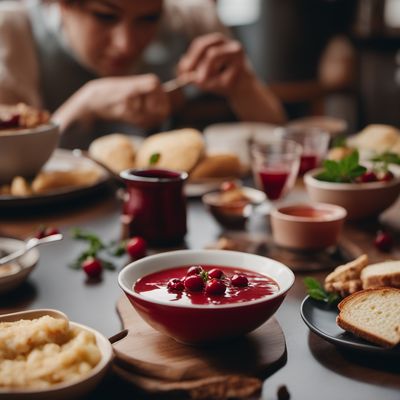
Meggyleves
Chilled sour cherry soup
Meggyleves is a traditional Hungarian soup made with sour cherries. It is a sweet and tangy dish that is typically served as a dessert.

Túrógombóc
Túrógombóc is a traditional Hungarian dish that is typically served as a dessert. The dish consists of a sweet dough that is filled with a mixture...
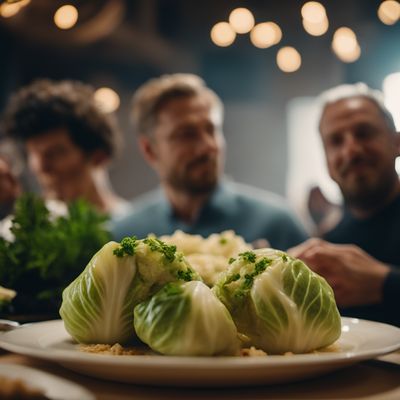
Töltött kaposzta
Stuffed Cabbage
Töltött kaposzta is a Hungarian dish made from cabbage leaves stuffed with a mixture of ground pork, rice, and spices. It is a popular dish in...
More Korean cuisine dishes » Browse all

Kimchijeon
Kimchi pancake
Kimchijeon is a Korean pancake made with kimchi and flour. It is a popular snack food in Korea and is often served as an appetizer or side dish.
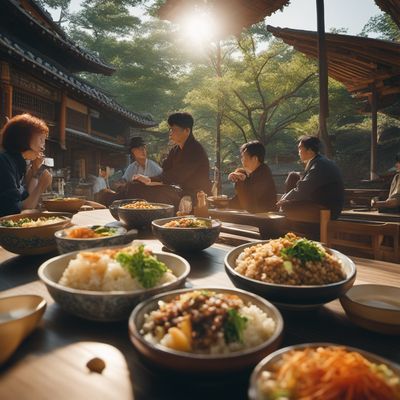
Dububap
Dububap is a traditional Korean dish made with rice, beans, and vegetables. It is usually served as a main course.

Doenjang jjigae
Soybean Paste Stew
Doenjang jjigae is a traditional Korean soup made with fermented soybean paste, vegetables, and meat or seafood. It is a staple in Korean cuisine...


